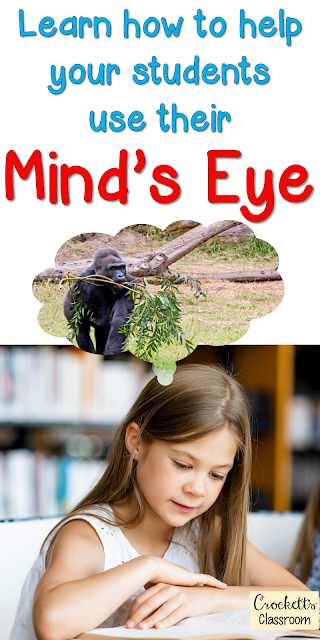Our
world is very visual. We see
pictures and images on TV, in social media, web sites, music videos, magazines and print ads in
every store window. But, students read a
lot of the text that does not have images. For a deeper understand of the text
it’s important for students to learn how to form these mental images.
0
One
strategy that is great for teaching students how to form these mental images is
called Mind’s Eye. It’s so simple to
implement and is a terrific way to begin a reading lesson.
The
first step is to choose 15 to 30 key words from the story or article. The words need to represent some of the key
ideas from the story.
For
example, if I was introducing the book Because of Winn Dixie, I might choose
these words:
grocery store, manager, red-faced, tomatoes, green peppers, ugly dog, skidding, mess, smile, mistake, summer, preacher, trailer park, manners, found, stay, home, friends.
Read each word to your class and ask them to make a picture in their mind. As you continue to read, encourage them to change this mental image. It will be almost like a movie is playing in their head.
When you finish reading the word list give students time to process their mental images. Here are a few ways they can continue to think about the images they've formed in their mind:
1. draw a picture of their mental images. Let them share and talk about their drawings with their group.
2. You can also ask them write a question they hope will be answered as they read the first few chapters.
3. Write predictions about what might happen in the book.
4. Describe the feelings they experienced as the words were being read.
Here is a free download to help you plan and implement this pre-reading strategy in your classroom.
















